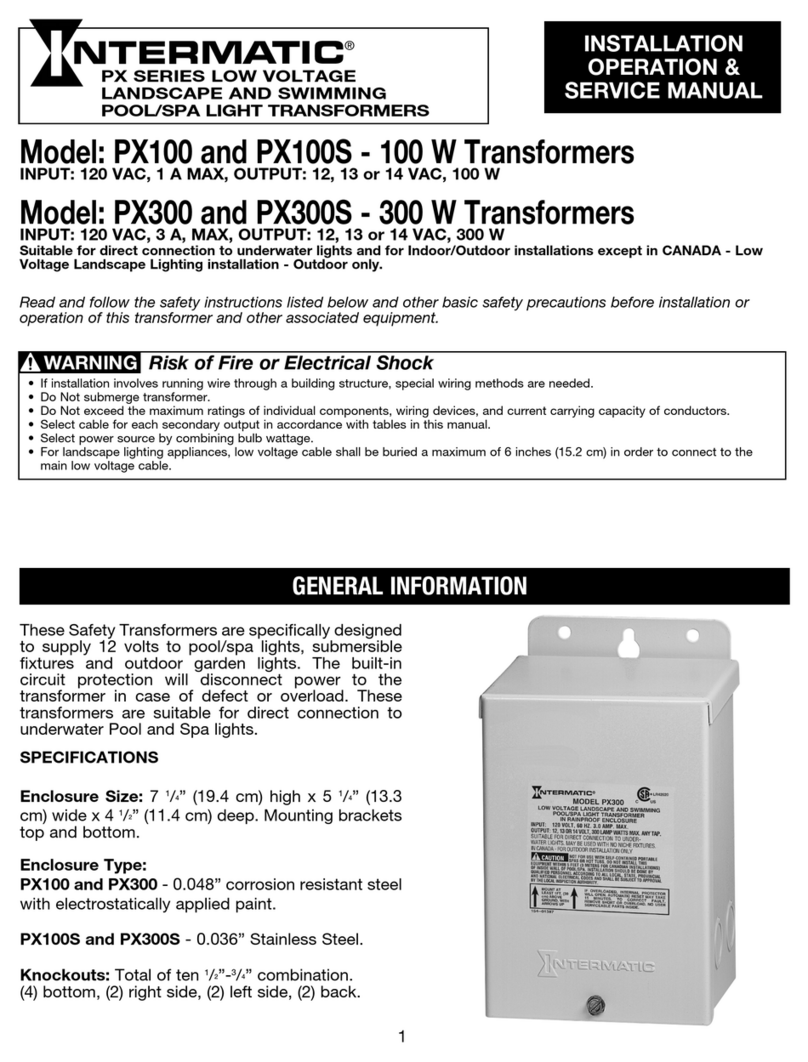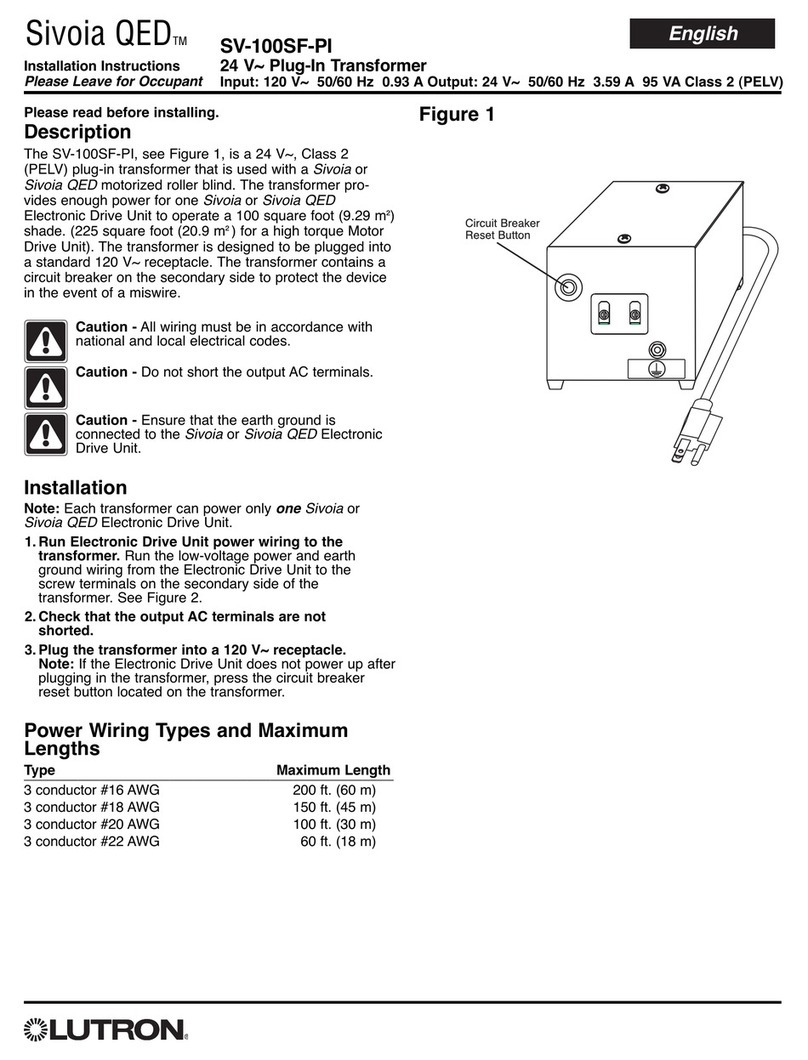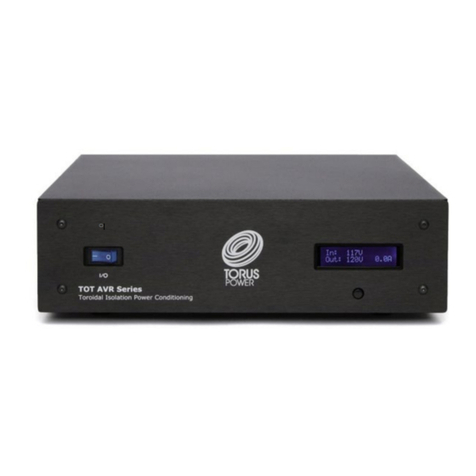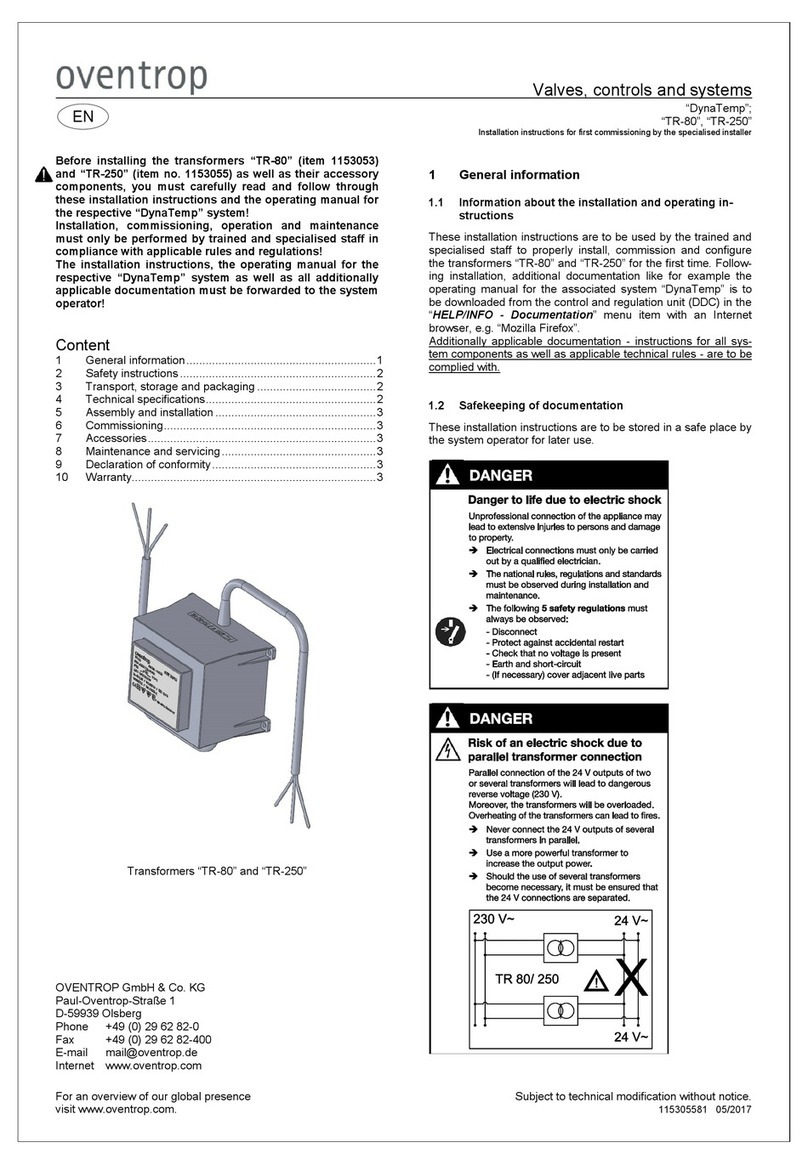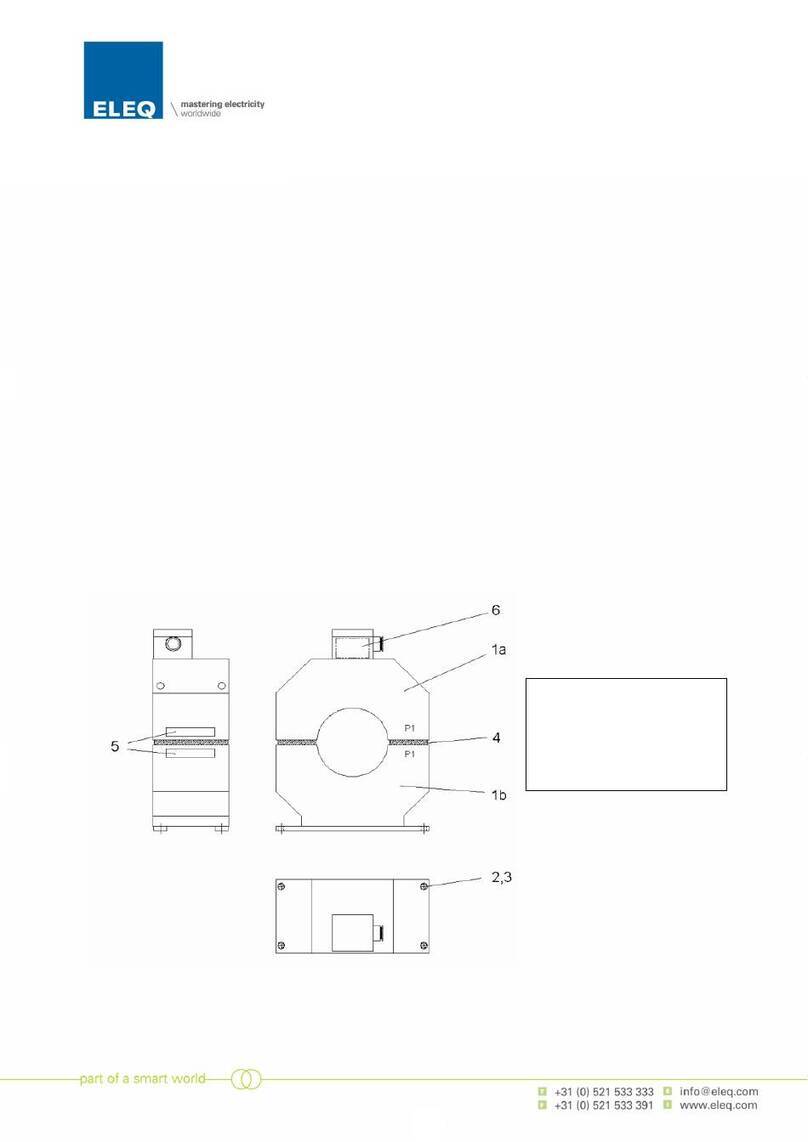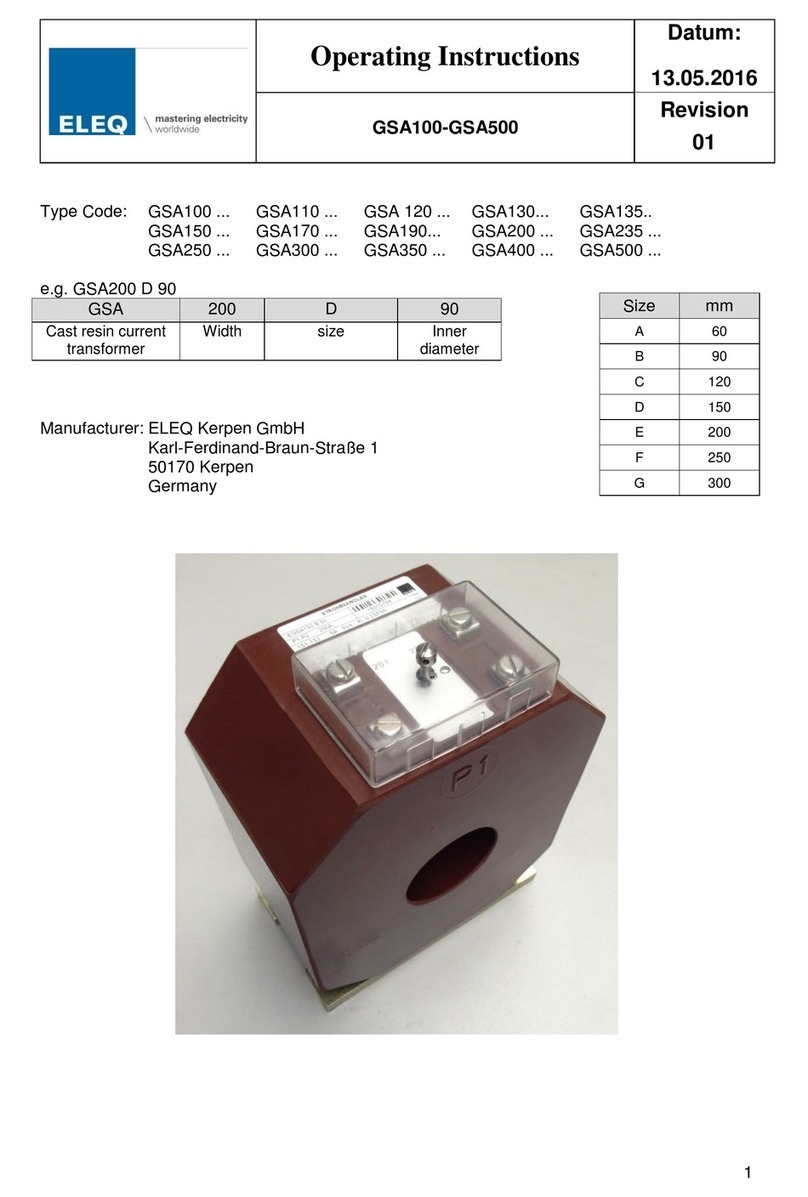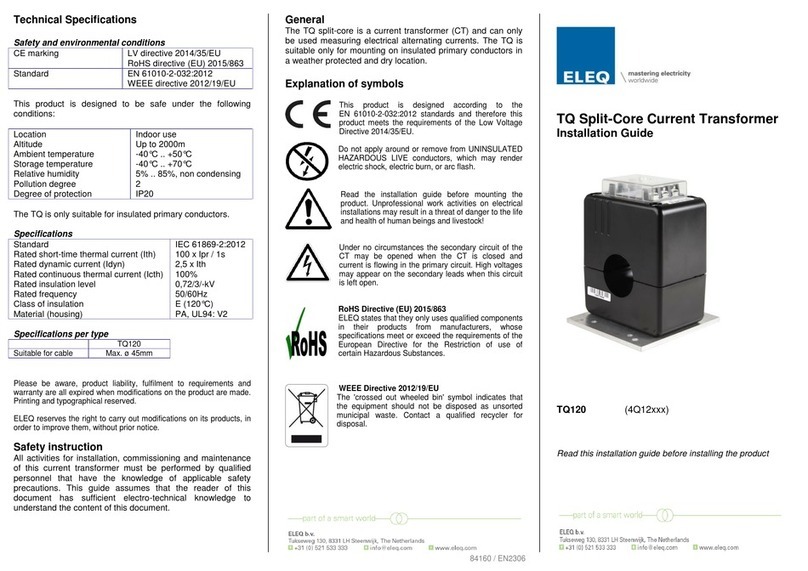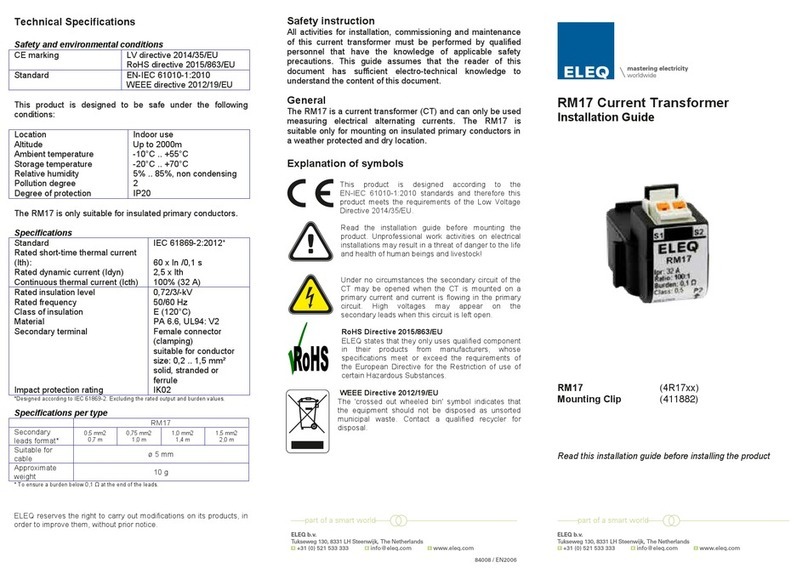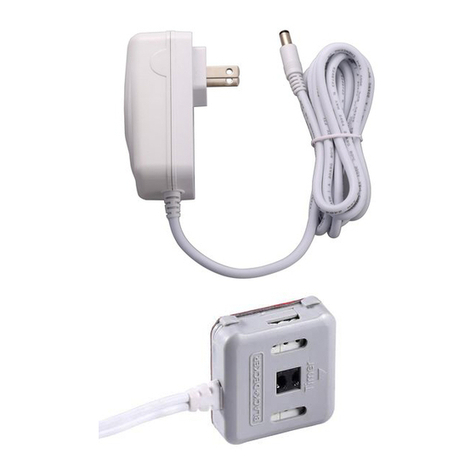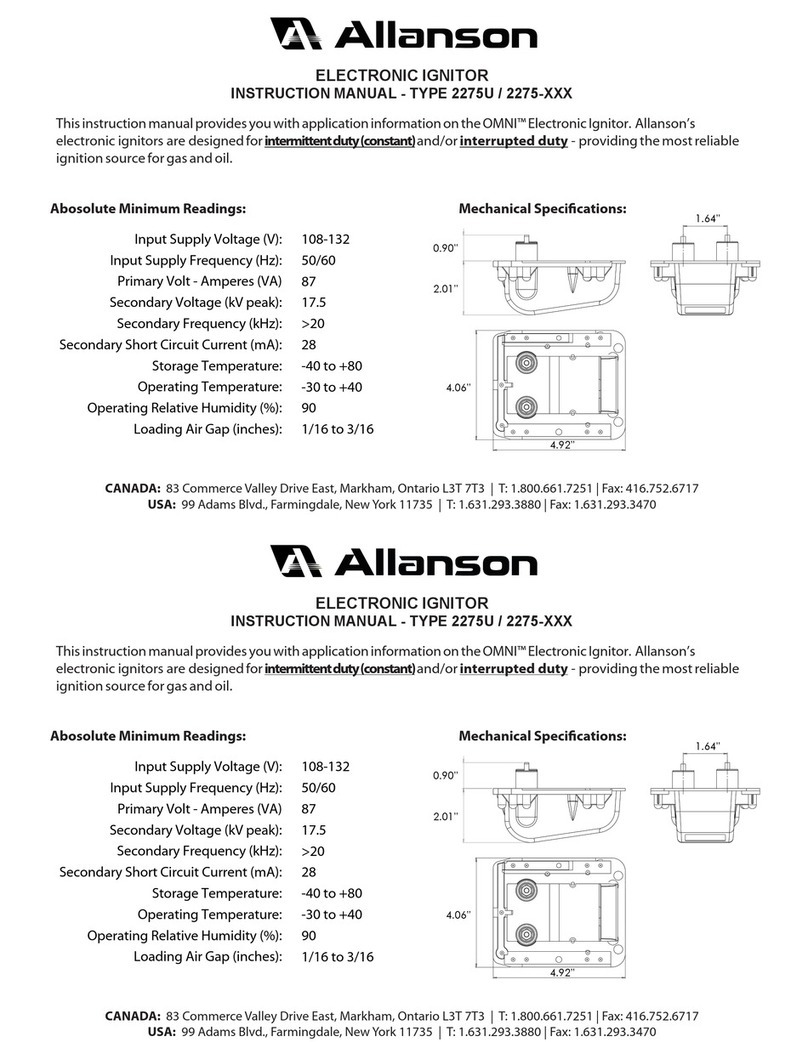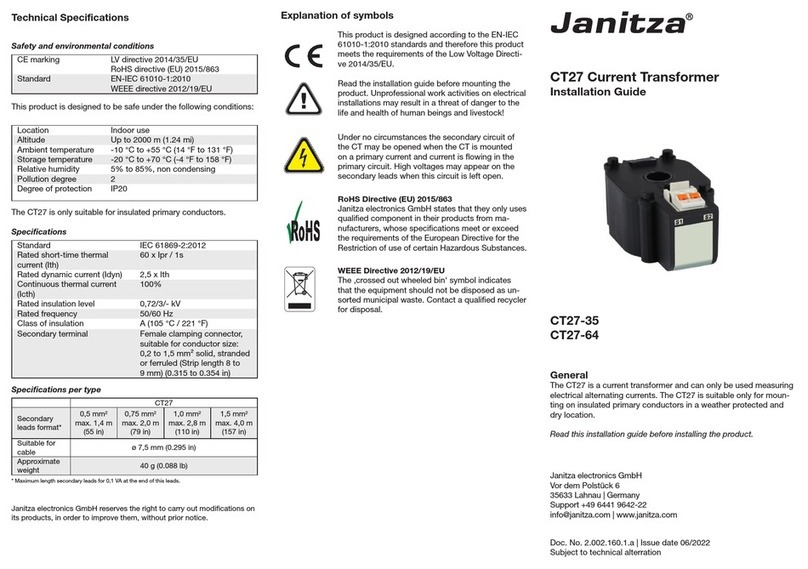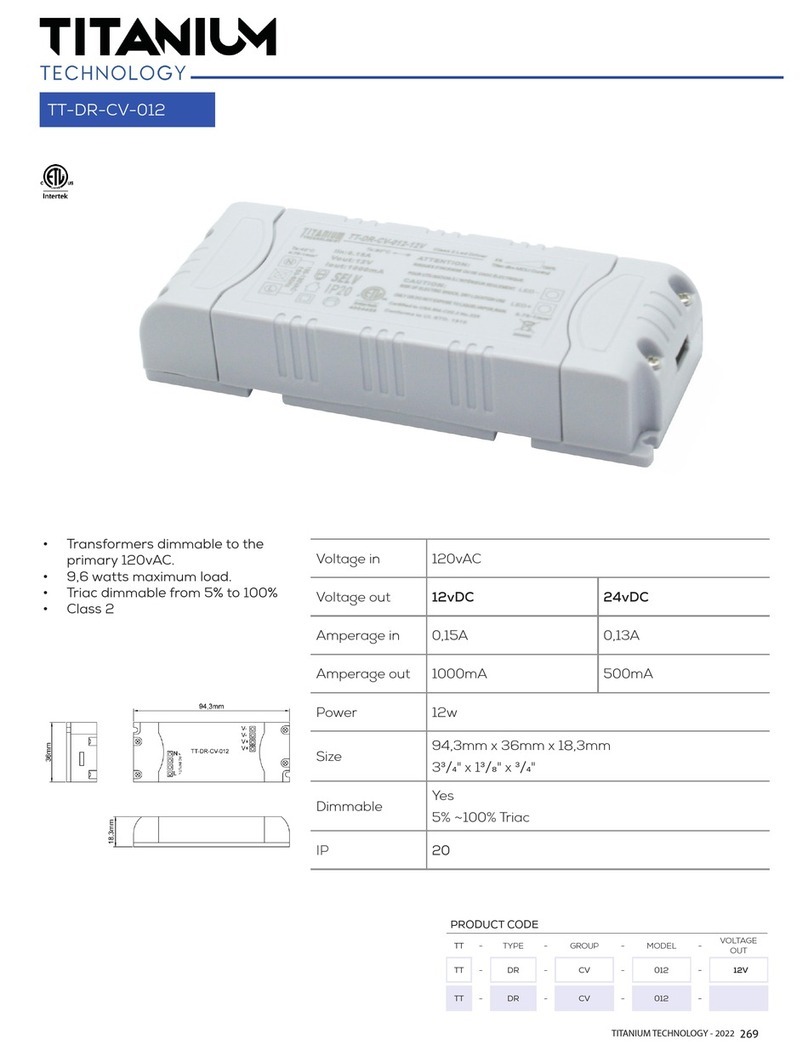
Always avoid working on live parts of an installation.
Mounting instruction
No special tools are required to install a current transformer
(LPCT) of the TQ series. To connect the LPCT to the meter
correctly, please consult the installation guide of the meter.
Assembly
1. Ensure a safe working area during assembly,
maintenance and inspection of the CT. If necessary,
disconnect the power of the primary circuit and make sure
it can not be enabled unintentionally.
2. Find the primary direction of the cable you want to
measure. It is recommended to mount the P1 side to
power source and the P2 side to power consumer. If the
CT is installed like this, the arrow on the LPCT will indicate
the direction of the power flow.
Attention
Do not touch the core surfaces. Removing the petroleum jelly
from the core halves will make the halves vulnerable to
damages. Avoid dust on the core surfaces.
For mounting the TQ50
For the TQ50-E and the TQ50-L the top-part of the
transformer can be removed entirely, which makes it even
simple to install the transformer. Attention: Make sure both
transformer parts stick together when you separate both
parts. When you mix transformer parts up the measurement
class can not be guaranteed.
3. Connect the secondary leads (S1, S2) to the voltage input
of the measurement instrument (e.g., a voltage meter or
voltage input of kWh-meter).
4. Close the LPCT only when you are sure that the
secondary leads are connected to the voltage input of the
measurement instrument. The LPCT is properly closed
when you hear a ‘click’.
5. Fasten the product to the primary cable using the supplied
cable ties. Ensure that the cable is in the middle
6. Check if the LPCT is mounted and closed properly.
Check if the secondary leads are connected properly and
firmly.
7. Enable the primary circuit if necessary.
Wiring Diagram
Maintenance and inspection
Check whether the secondary leads are connected firmly.
Check whether the LPCT is closed properly.
Check whether the LPCT is mounted firmly.
Remove severe pollution on the casing. Contact with
moisture, especially with the core, must be avoided.
Attention
Do not touch the core surfaces by hand: skin acid may
damage the core.
Temporarily disconnecting the LPCT
There is no risk of high voltages on the secondary leads due
to the internal shunt. It is still advised to work in a powerless
situation.
Problem solving
e.g. unexpected values or incorrect values , reversed power,
Check the settings of the meter by using the installation
guide of the meter.
Check whether the LPCT is mounted on the intended cable
in the right direction.
Check if the LPCT is closed properly.
Check the value of the secondary burden (secondary leads
length/diameter and meter impedance). See product/data
sheet for the maximum burden value.
If previous points did not solve the problem:
Check carefully whether there is dust or other pollution
present between the two parts of the core. In case there is
pollution, the core surfaces can be cleaned with a lint free
cloth and then protected with an extremely thin layer of acid
free petroleum jelly (Vaseline).
Attention
Always follow the disassembling instructions when reversing
the LPCT.
Disassembly instruction
Tools are only required for removing the cable ties of the
LPCT.
1. Ensure a safe working area during disassembling the
LPCT. If necessary, disconnect the power of the primary
circuit and make sure it can not be enabled
unintentionally.
2. Open the LPCT.
3. Disconnect the secondary leads from the measurement
instrument.
4. Remove the cable ties. Pay attention not damage the
insulation of the primary conductor when removing the
cable ties. Remove the CT.
5. Enable the primary circuit if is necessary.
Recycling
When the product has reached ‘end of life’, it must be
recycled. Do not dispose this product as unsorted municipal
waste. Contact a qualified recycler for disposal.
../333 mV
Brown lead: S1
Blue lead: S2
../333 mV
Black lead: S1
Red lead: S2
Always avoid working on live parts of an installation.
Mounting instruction
No special tools are required to install a current transformer
(LPCT) of the TQ series. To connect the LPCT to the meter
correctly, please consult the installation guide of the meter.
Assembly
1. Ensure a safe working area during assembly,
maintenance and inspection of the CT. If necessary,
disconnect the power of the primary circuit and make sure
it can not be enabled unintentionally.
2. Find the primary direction of the cable you want to
measure. It is recommended to mount the P1 side to
power source and the P2 side to power consumer. If the
CT is installed like this, the arrow on the LPCT will indicate
the direction of the power flow.
Attention
Do not touch the core surfaces. Removing the petroleum jelly
from the core halves will make the halves vulnerable to
damages. Avoid dust on the core surfaces.
For mounting the TQ50
For the TQ50-E and the TQ50-L the top-part of the
transformer can be removed entirely, which makes it even
simple to install the transformer. Attention: Make sure both
transformer parts stick together when you separate both
parts. When you mix transformer parts up the measurement
class can not be guaranteed.
3. Connect the secondary leads (S1, S2) to the voltage input
of the measurement instrument (e.g., a voltage meter or
voltage input of kWh-meter).
4. Close the LP
CT only when you are sure that the
secondary leads are connected to the voltage input of the
measurement instrument. The LPCT is properly closed
when you hear a ‘click’.
5. Fasten the product to the primary cable using the supplied
cable ties. Ensure that the cable is in the middle
6. Check if the LPCT is mounted and closed properly.
Check if the secondary leads are connected properly and
firmly.
7. Enable the primary circuit if necessary.
Wiring Diagram
Maintenance and inspection
Check whether the secondary leads are connected firmly.
Check whether the LPCT is closed properly.
Check whether the LPCT is mounted firmly.
Remove severe pollution on the casing. Contact with
moisture, especially with the core, must be avoided.
Attention
Do not touch the core surfaces by hand: skin acid may
damage the core.
Temporarily disconnecting the LPCT
There is no risk of high voltages on the secondary leads due
to the internal shunt. It is still advised to work in a powerless
situation.
Problem solving
e.g. unexpected values or incorrect values , reversed power,
Check the settings of the meter by using the installation
guide of the meter.
Check whether the LPCT is mounted on the intended cable
in the right direction.
Check if the LPCT is closed properly.
Check the value of the secondary burden (secondary leads
length/diameter and meter impedance). See product/data
sheet for the maximum burden value.
If previous points did not solve the problem:
Check carefully whether there is dust or other pollution
present between the two parts of the core. In case there is
pollution, the core surfaces can be cleaned with a lint free
cloth and then protected with an extremely thin layer of acid
free petroleum jelly (Vaseline).
Attention
Always follow the disassembling instructions when reversing
the LPCT.
Disassembly instruction
Tools are only required for removing the cable ties of the
LPCT.
1. Ensure a safe working area during disassembling the
LPCT. If necessary, disconnect the power of the primary
circuit and make sure it can not be enabled
unintentionally.
2. Open the LPCT.
3. Disconnect the secondary leads from the measurement
instrument.
4. Remove the cable ties. Pay attention not damage the
insulation of the primary conductor when removing the
cable ties. Remove the CT.
5. Enable the primary circuit if is necessary.
Recycling
When the product has reached ‘end of life’, it must be
recycled. Do not dispose this product as unsorted municipal
waste. Contact a qualified recycler for disposal.
Brown lead: S1
Blue lead: S2
../333 mV
Black lead: S1
Always avoid working on live parts of an installation.
Mounting instruction
No special tools are required to install a current transformer
(LPCT) of the TQ series. To connect the LPCT to the meter
correctly, please consult the installation guide of the meter.
Assembly
1. Ensure a safe working area during assembly,
maintenance and inspection of the CT. If necessary,
disconnect the power of the primary circuit and make sure
it can not be enabled unintentionally.
2. Find the primary direction of the cable you want to
measure. It is recommended to mount the P1 side to
power source and the P2 side to power consumer. If the
CT is installed like this, the arrow on the LPCT will indicate
the direction of the power flow.
Attention
Do not touch the core surfaces. Removing the petroleum jelly
from the core halves will make the halves vulnerable to
damages. Avoid dust on the core surfaces.
For mounting the TQ50
For the TQ50-E and the TQ50-L the top-part of the
transformer can be removed entirely, which makes it even
simple to install the transformer. Attention: Make sure both
transformer parts stick together when you separate both
parts. When you mix transformer parts up the measurement
class can not be guaranteed.
3. Connect the secondary leads (S1, S2) to the voltage input
of the measurement instrument (e.g., a voltage meter or
voltage input of kWh-meter).
4. Close the LPCT only when you are sure that the
secondary leads are connected to the voltage input of the
measurement instrument. The LPCT is properly closed
when you hear a ‘click’.
5. Fasten the product to the primary cable using the supplied
cable ties. Ensure that the cable is in the middle
6. Check if the LPCT is mounted and closed properly.
Check if the secondary leads are connected properly and
firmly.
7. Enable the primary circuit if necessary.
Wiring Diagram
Maintenance and inspection
Check whether the secondary leads are connected firmly.
Check whether the LPCT is closed properly.
Check whether the LPCT is mounted firmly.
Remove severe pollution on the casing. Contact with
moisture, especially with the core, must be avoided.
Attention
Do not touch the core surfaces by hand: skin acid may
damage the core.
Temporarily disconnecting the LPCT
There is no risk of high voltages on the secondary leads due
to the internal shunt. It is still advised to work in a powerless
situation.
Problem solving
e.g. unexpected values or incorrect values , reversed power,
Check the settings of the meter by using the installation
guide of the meter.
Check whether the LPCT is mounted on the intended cable
in the right direction.
Check if the LPCT is closed properly.
Check the value of the secondary burden (secondary leads
length/diameter and meter impedance). See product/data
sheet for the maximum burden value.
If previous points did not solve the problem:
Check carefully whether there is dust or other pollution
present between the two parts of the core. In case there is
pollution, the core surfaces can be cleaned with a lint free
cloth and then protected with an extremely thin layer of acid
free petroleum jelly (Vaseline).
Attention
Always follow the disassembling instructions when reversing
the LPCT.
Disassembly instruction
Tools are only required for removing the cable ties of the
LPCT.
1. Ensure a safe working area during disassembling the
LPCT. If necessary, disconnect the power of the primary
circuit and make sure it can not be enabled
unintentionally.
2. Open the LPCT.
3. Disconnect the secondary leads from the measurement
instrument.
4. Remove the cable ties. Pay attention not damage the
insulation of the primary conductor when removing the
cable ties. Remove the CT.
5. Enable the primary circuit if is necessary.
Recycling
When the product has reached ‘end of life’, it must be
recycled. Do not dispose this product as unsorted municipal
waste. Contact a qualified recycler for disposal.
../333 mV
Brown lead: S1
Blue lead: S2
../333 mV
Black lead: S1
Red lead: S2


